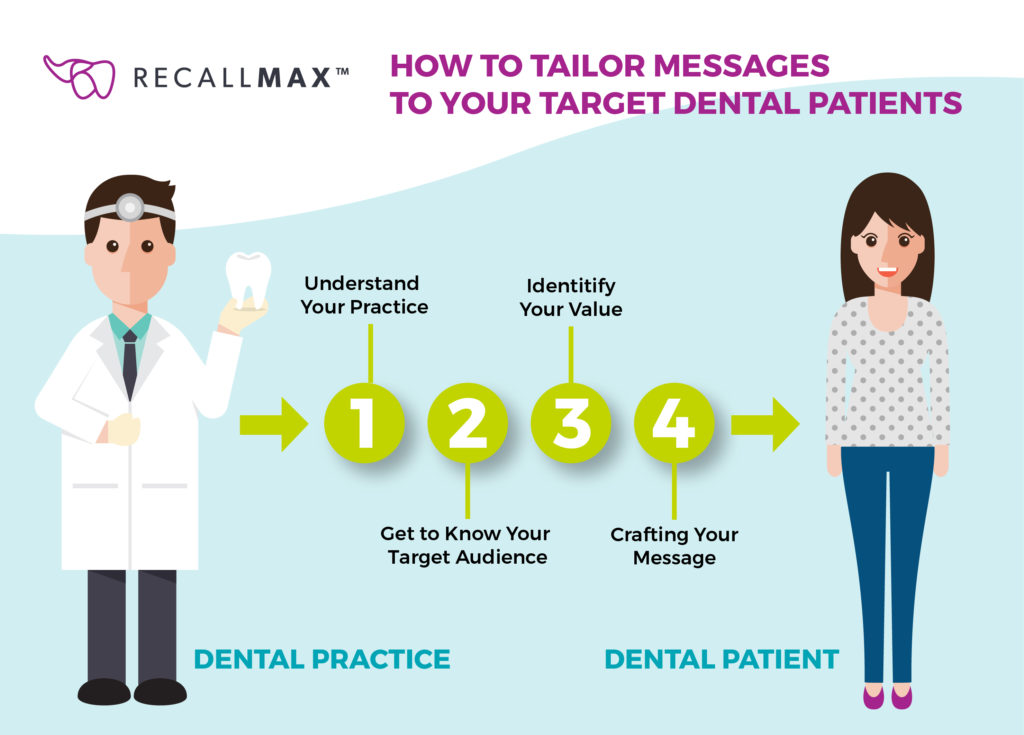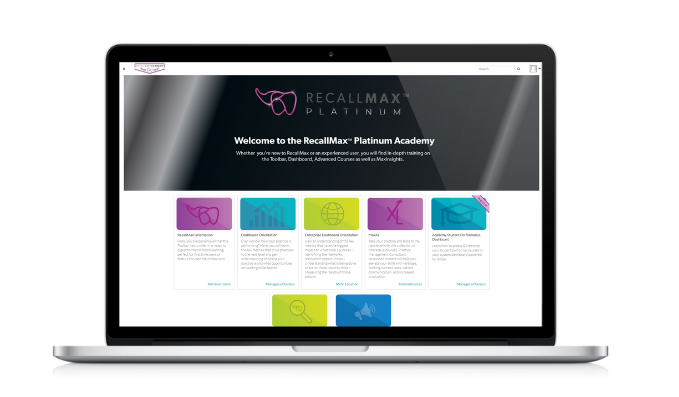Reaching out to attract the ideal patient can feel like a guessing game. You want to help your practice grow, but how do you attract the right people with your messaging?
As a practice owner, no one understands your business better than you, and with a few tips, you can learn how to effectively tailor your messages to your target dental patients.

Understand Your Practice
Before you can understand patients, you have to understand your practice. A brand’s perception is entirely subjective, but no one understands your practice’s purpose more than you. Consider and ask yourself the following questions:
- What’s your practice’s vision?
- What’s your mission?
- What’s your culture?
- What are the business’s core values?
These are some of the baseline questions you should ask yourself about your practice to help understand its mission. Of course, your practice exists to provide a service, but try to uncover the passion behind it.
After you’ve shaped an idea of your practice’s identity, creating a brand personality can help bring it to life. If it feels strange give your dental practice a personality, act as though they’re a person and develop what they value, enjoy, and dislike.
For example, a practice’s personality may be an intellectual, competent doctor who makes patients feel like they’re in good hands, or perhaps a nurturing personality focused on making patients feel comfortable.
Understanding your practice is only step 1; once you’ve defined your brand, it’s time to identify and understand your target dental patients.

Get to Know Your Target Audience
If your practice is well-established, you likely know your target patients well, and tailoring your messages to them is easier. This process becomes more difficult if you don’t have a firm understanding of your target audience, but how can you begin to understand your patients and find the audience you wish to tailor your messages to? You can accomplish this by getting to know the various aspects of your target dental patients, such as their:
Demographics
Demographics are the characteristics of a population. These are the defining aspects of a person, including:
- Age
- Gender
- Income level
- Occupation
- Marital status
- Family size
These characteristics can help paint a picture of the targeted patients you’re trying to appropriately message to. Think of demographics as “who” your audience is.
Psychographics
Psychographics study the activities, interests, and opinions of an audience. These are the characteristics of how people live their lives and can include their:
- Hobbies
- Values
- Lifestyle
- Personalities
- Attitudes
- Behaviours
- Opinions
Think of psychographics as the “why” for your target audience’s purchases. These are the factors contributing to their reasons to choose one dental practice instead of another.
When you understand who and what your target patients stand for, you can identify their common pain points, the problems they typically face with your industry.
Pain Points (AKA Problems)
Pain points are a great way to identify what your target is looking for. These are problems a person consistently has, and they can help you decide what sort of messages you want to create for this audience.
For example, if you have a family-focused clinic, and a common problem for your target dental patients is their children feeling uncomfortable at the dentist, you can highlight your practice’s family-friendly team and dedication to making everyone feel comfortable.
Pain points are an effective way to uncover the value your practice can offer your targeted dental patients.
Identify Your Value
Now that you understand your practice and your target patients, you must identify the value (or benefits) you can provide to your audience. Your practice undoubtedly has value, but focus on understanding the benefits your target audience will care about the most.
If your target clients care about medical expertise, tailor your messaging to highlight your practice’s impressive dentists. Finding inspiration can help identify your practice’s unique value, and you can do this by looking at other practices.
What are Your Competitors Saying?
Look at other dental practices with a similar personality to yours, and you’ll begin to see how they’re tailoring their messages. You can also use competitor messaging to identify the unique value your practice can offer clients.
Once you’ve identified your value, target audience and culture, it’s time to put everything together.
Crafting Your Message
Tailoring your messaging can seem like a daunting task, but identifying your value, target audience and culture makes the difference between effective and ineffective messaging. These are guiding tools for crafting your messaging, and they can identify:
- What the target dental clients value and what they desire
- How you can provide the benefits they desire
- How you can stand out from your competitors
Having an answer to each of these questions can help you tailor your messaging to be effective and help grow your practice. With effective messaging, you can bring in new dental patients, and help recall them as well. Remember, 80% of patient revenue comes from existing clients.


-1.png?width=679&height=397&name=Untitled%20design%20(1)-1.png)
-1.png?width=679&height=397&name=Untitled%20design%20(2)-1.png)


